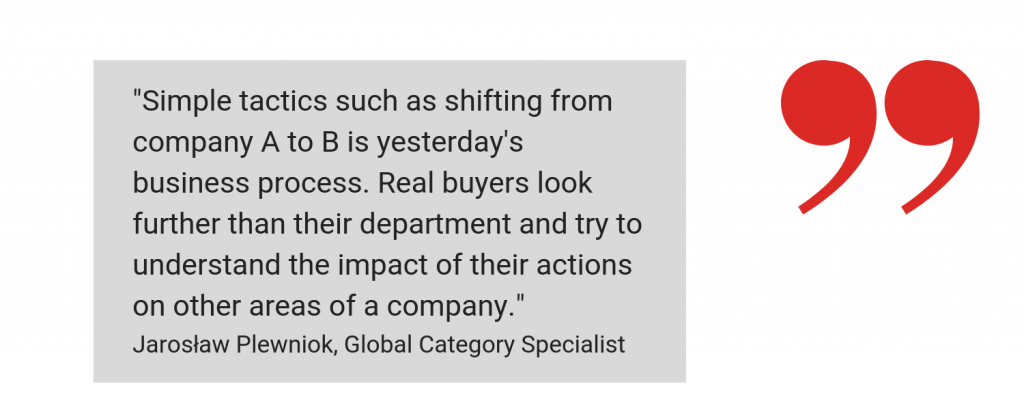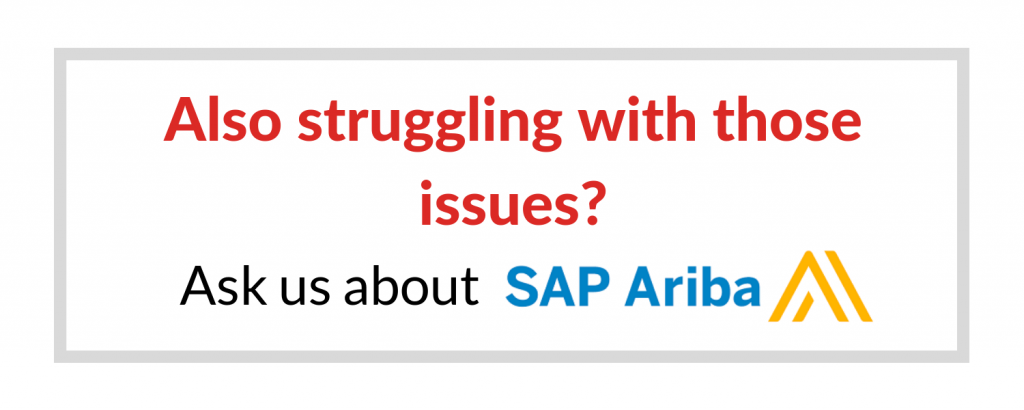How long would it take to build a Colosseum with SAP Ariba?

Anna Kolinczat, SAP Ariba Consultant
- 10th December 2018
- Trends in SAP
- 4 min

Would it have been possible to create the Colosseum and the Taj Mahal without an effective network of suppliers, orders and delivery managers?
The fact that these “wonders of the world” were crafted is tangible proof that purchasing processes are as old as civilization. These monuments were built throughout hundreds of years – without advanced, or dedicated tools.

How would such gargantuan projects be built if ancient civilizations had state-of-the-art solutions, available at any time, from any place in the world?
After the global economic crisis, management staff began to view purchasing departments differently. Purchasing departments took on a new role: they became centers for controlling costs and finding savings.
Purchasing managers realized that having a good buyer on a team translates to real money for the company.
What defines a “good buyer”?
First of all, we have to ask ourselves – who is this “good buyer”? Purchasing specialists with years of experience in strategic procurement attempt to help us answer the question, by explaining their understanding of the underlying issues.
Jarosław Plewniok, Global Category Specialist with several years of experience in purchasing for the automotive industry, says:
The role a Buyer has changed in recent years, we no longer simply process demands and handle orders. Now, we are a significant department within companies, and we wield significant influence over company profitability and innovation.
We no longer focus only on working according to the “$5 less” principle. Instead, we introduce long-term strategies in specific areas, so that we can make dynamic changes in others. Such spur-of-the-moment modifications are often situational and in response to customer needs or market trends.

More and more often, Buyers work on change implementation or champion the need for changes in production processes. All this to reduce costs.
Simple tactics such as shifting from company A to B is yesterday’s business process. Real buyers look further than their department and try to understand the impact of their actions on other areas of a company. Buyers today maintain a holistic approach to processes and have extensive knowledge – not only commercial but also technical, legal, logistic. The modern Buyer also pays close attention to the local and international political situation, as politics can have a tremendous impact on the markets and supplier base.

Jacek Krajnik, an Indirect Buyer, has a similar attitude:
A modern buyer stays cool under pressure, and keeps an eye on the whole image of the “battlefield”. Today’s Buyer is someone who can think and plan and, consequently, achieve his or her goals on time.
At the same time, a Buyer manages current contracts in the specific product categories, is continuously looking for savings – new and better goods with added value, and is always aware of their role in process optimization.
A critical issue for the modern Buyer is cooperating well with suppliers, and also with the employees of their company – as these colleagues are the ones who request orders for specific products.
The Buyer is a link between a company and a supplier, tasked to find and recommend the best product or service. By best I mean the one fully meeting the requirements of the specification, for the best price on the market. To sum up, I wouldn’t consider it an exaggeration to define Buyer as an extraordinarily versatile employee.
SAP Ariba – comprehensive support for the buyer
As our specialists mention above, current work in purchasing resembles a “battle”, in which steady nerves and experience are not always enough. A buyer’s real “weapon” is expert knowledge combined with a reliable tool for analysis, sourcing, supplier database management and documentation.

Purchasing analysis and planning
In the discussions above, the experts mention that the analysis stage is crucial to the process of looking for savings.
It is through reports that we can determine at which stadium of the process the company incurs the highest costs and where we can reduce them.
Purchasers indicate that the lack of data consistency and low flexibility when creating reports are the most significant problems in this category.
This is what Jacek Krajnik says about it:
If we work on two systems at the same time, e.g., SAP SRM and SAP ERP with MM module, the data is often divergent, which makes it often impossible to consolidate information from both systems into a single report.

Jarosław Plewniok faces a similar problem, he says:
The divergence in terminology, classification of materials and their groups between the purchasing department and other departments of the company (such as finance or production) can cause many problems.
One such problem is obtaining different values when generating turnover reports from several separate transactions. For example, turnover resulting from cooperation based on consignment composition will not be visible. In turn, something that I call material such as a computer mouse and classify as “IT hardware”, the leader of the laminating line would order from the material group called “laminating materials”, because he wants to assign this material to his cost center.
The matter becomes even more complicated when the company has multiple branches or/and plants all over the world.

Another problem encountered by the Category Manager is related to previewing the history of supplier inquiries and planning:
When looking for savings, you need details to understand the “cost model” developed by a supplier for a particular service.
Let’s examine, for example, the scaffolding setup service for maintenance work. Knowing the historical cost model, we can specify the cost of man-hour, material (often in m3) and the time in which the scaffolding was prepared.
In case of having a system that allows you to keep your historical inquiries, we gain two benefits. If an inexperienced person joins the company, he or she can immediately see the old RFXs and check what to pay attention to and learn about historical prices.
The second important issue is negotiations with final suppliers. In this case, with visibility, we also automatically get answers to the questions:
- Do the different price components of various suppliers fall within similar ranges?
- Do they differ greatly?
Solving these doubts often opens the door to negotiations.
– claims Jarosław Plewniok.
SAP Ariba – analysis module
How are the problems discussed above and other complex issues solved by the SAP Ariba platform? By making Ariba the primary data source and tool for handling purchasing documents, the risk of information discrepancies when generating reports is dramatically reduced.
The system provides services for collecting, filtering and supplementing data. This allows SAP Ariba to provide efficient expenses management. The unified, collated information can then be further enriched with data from the D&B (Dun&Bradstreet) database, to help to assess the supplier regarding risk management.
Modern, clear graphs and predefined reports enable simple data processing. If necessary, the reports can also be saved to Excel.
SAP Ariba Spend Visibility Professional, in turn, contains individual reporting categories:
- concerning documents – Invoices and Orders,
- basic financial data of the supplier,
- comparative data of the product (benchmark – CPI and PPI),
- cross-tables,
- material groups reports (UNSPSC).
We gain access to all reports and charts in the form of a user-friendly and functional view. At this point, it is worth remembering that Ariba works in the cloud.
In practice, this means that Buyer can view reports and charts with data in real time on any Internet-enabled device.
Want to know the possibilities of SAP Ariba?
- On 11/12/2018







0 Comments